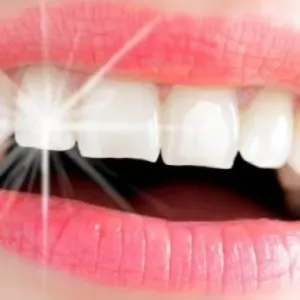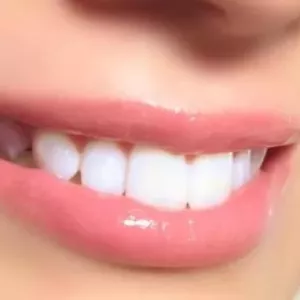هل الاستثمار في المشاريع الصغيرة مربح؟ دليلك الكامل

مقدمة
في ظل التحديات الاقتصادية المتزايدة، أصبح الكثير من الأشخاص يبحثون عن طرق بديلة لتنمية دخلهم. ومن بين هذه الطرق، يبرز الاستثمار في المشاريع الصغيرة كخيار جذاب وواقعي للكثيرين. لكن يبقى السؤال: هل الاستثمار في المشاريع الصغيرة مربح حقًا؟ الجواب ليس بسيطًا، إذ يعتمد على عوامل متعددة كنوع المشروع، وحجم السوق، وخطة العمل.
في هذا الدليل الشامل، سنستعرض أهمية الاستثمار في المشاريع الصغيرة، أنواعه، أبرز مميزاته ومخاطره، بالإضافة إلى نصائح مهمة لنجاح هذا النوع من الاستثمار.
ما المقصود بالمشاريع الصغيرة؟
المشاريع الصغيرة هي أنشطة اقتصادية يتم إنشاؤها وإدارتها برأس مال محدود، وغالبًا ما تعتمد على عدد قليل من الموظفين أو حتى فرد واحد. تشمل هذه المشاريع قطاعات متعددة مثل:
-
التجارة الإلكترونية
-
المقاهي والمطاعم الصغيرة
-
ورش الحرف اليدوية
-
خدمات التصميم أو البرمجة
-
الإنتاج المنزلي (كالطبخ أو مستحضرات التجميل)
هل الاستثمار في المشاريع الصغيرة مربح؟
✅ نعم، بشرط التخطيط الجيد
الربح من المشاريع الصغيرة ممكن ومتاح، لكن لا يأتي بالصدفة. يتطلب الأمر دراسة جدوى حقيقية، وفهمًا للسوق، وإدارة مالية ذكية. بعض المشاريع الصغيرة تحقق عوائد تفوق الاستثمارات التقليدية إذا تم إدارتها بفعالية.
مميزات الاستثمار في المشاريع الصغيرة
1. رأس مال منخفض
يمكنك البدء بمبالغ بسيطة مقارنةً بالاستثمارات الكبيرة، مما يقلل من المخاطر الأولية.
2. إمكانية تحقيق أرباح سريعة
بعض المشاريع الصغيرة تبدأ في تحقيق أرباح خلال أشهر قليلة، خاصةً إذا استهدفت حاجة حقيقية في السوق.
3. مرونة الإدارة
أنت من يحدد ساعات العمل، ويقرر التوسعة أو التطوير حسب الظروف.
4. تطور مهاراتك
إدارة مشروع صغير تعلمك مهارات في التسويق، المحاسبة، العلاقات العامة وغيرها.
أبرز التحديات والمخاطر
1. ضعف الخبرة
كثير من المستثمرين الجدد يفتقرون للخبرة في إدارة المشاريع، مما يؤدي إلى قرارات غير مدروسة.
2. مشاكل السيولة
إذا لم يتم التخطيط الجيد للنفقات، قد تعاني من عجز مالي مبكر.
3. المنافسة الشديدة
خصوصًا في الأسواق المليئة بمشاريع متشابهة، يجب أن تتميز لتبقى.
أفضل المشاريع الصغيرة التي يمكن الاستثمار فيها
1. التجارة الإلكترونية (بيع منتجات يدوية أو رقمية)
من أسهل وأسرع المشاريع التي يمكنك البدء بها من المنزل.
2. مشروع مقهى صغير
بفكرة مبتكرة أو تصميم فريد، يمكنك تحقيق أرباح جيدة.
3. مطبخ منزلي أو بيع مأكولات عبر الإنترنت
مشروع مثالي للأشخاص الذين يحبون الطبخ، ويستهدف الطلب المتزايد على الطعام المنزلي.
4. مشروع طباعة حسب الطلب (Print on Demand)
تصميم وبيع قمصان أو منتجات عليها رسوماتك الخاصة.
5. خدمات رقمية (تصميم، ترجمة، كتابة محتوى)
لا تحتاج سوى حاسوب واتصال بالإنترنت.
خطوات بدء مشروع صغير ناجح
1. دراسة السوق
افهم جمهورك المستهدف، وتعرف على المنافسين.
2. كتابة خطة عمل واضحة
تشمل التكاليف، التسعير، التسويق، وأهداف المشروع.
3. البدء برأس مال محدود
ابدأ صغيرًا، وتوسع مع الأرباح.
4. استغلال الإنترنت في التسويق
استخدم وسائل التواصل الاجتماعي، Google My Business، أو حتى إنشاء موقع إلكتروني بسيط.
5. التطوير المستمر
تابع أداء مشروعك، وكن مستعدًا لتحديثه حسب متطلبات السوق.
متى يكون الاستثمار في مشروع صغير فكرة سيئة؟
-
عندما لا يكون لديك وقت كافٍ للإدارة
-
عندما تستثمر كل مدخراتك دون خطة واضحة
-
إذا كنت لا تتحمل الخسارة أو الضغوط النفسية الناتجة عنها
خاتمة
الاستثمار في المشاريع الصغيرة يمكن أن يكون بابًا رائعًا لتحقيق الاستقلال المالي والنجاح المهني، لكنه يتطلب التزامًا وتخطيطًا ومهارات إدارية. لا يوجد مشروع ناجح بدون تعب، لكن الجهد الذي تبذله في البداية سيؤتي ثماره لاحقًا. تذكّر أن كل مشروع كبير بدأ بفكرة صغيرة!
الكلمات المفتاحية (Keywords):
الاستثمار في المشاريع الصغيرة، هل المشاريع الصغيرة مربحة، مشاريع صغيرة ناجحة، كيفية بدء مشروع صغير، مشروع ناجح برأس مال صغير، استثمار ناجح 2025، التجارة الإلكترونية، الربح من المشاريع الصغيرة، خطة عمل مشروع صغير، أفكار مشاريع مربحة.







